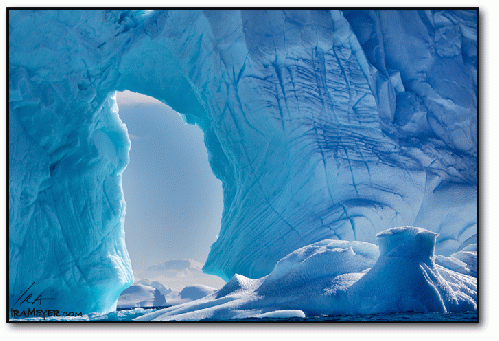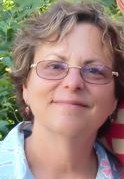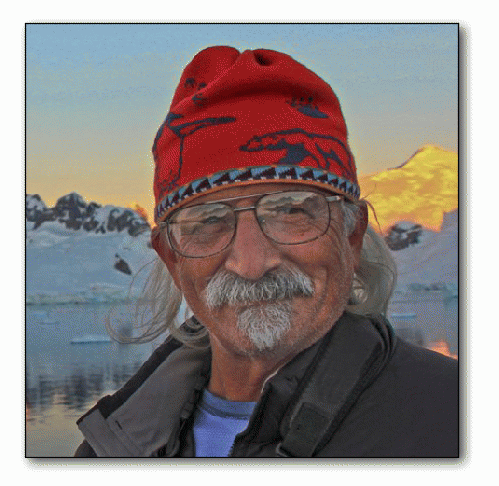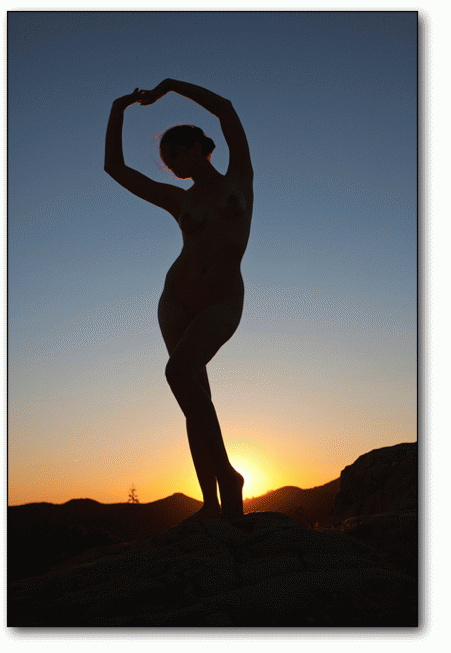
Iceberg Arch and Mountains, Spert Islands, Antarctica
(Image by copyright Ira Meyer, used with permission) Details DMCA
My guest today is world-class nature photographer, Ira Meyer.
JB: Welcome to OpEdNews, Ira. You've had your work on the cover of National Geographic. Yet you never even set out to be a photographer. How did find yourself on this career path?
IM: My photography career began entirely by chance. I had been an avid bicyclist, and owned a small lawn maintenance business. One day, while out on an 80-mile training ride, I was hit by a passing car. Ten days in the hospital led to three months out of work. A year later, my health and strength regained, north central Florida's summer hit with its typical vengeance. About to turn 40, I realized I'd done this type of work long enough. I put my business up for sale. Six weeks later, I was free of it. Not owning a business or home, nor being in a relationship, and having some money in my pocket, I decided to take a break. I bought a used van in which to drive to Alaska. As a complete afterthought, I bought a $180 Fuji point-and-shoot camera. I had never touched a camera before. Yet I knew I'd be driving up some beautiful roads, as well as hiking up gorgeous trails... and thought I'd get a snapshot or two for my walls.
JB: That bike accident changed the direction of your life entirely. What was that Alaska trip with a camera like? How long did it take for you to develop a good eye?
IM: I've long since said the bicycle accident was bad luck turned good. The trip was incredible, as all the territory north and west of Colorado was new to me. I loved the mountains. And the wildlife I encountered en route delighted me. The Fuji camera was small, and clipped on to my belt. So traveling with it was no different than without. Then, when I got to Fairbanks, Alaska, I picked up a used SLR camera with a 70-210 lens; as this would enable me to get better closeups of the animals I was encountering.
From the get-go, people told me I had a good eye. Yet I thought nothing of it. A few years later, helping a friend out who owned a one-hour photo shop, I began to see how little compositional integrity many other folks' photos had. And I started to think that maybe my background in lawn maintenance and landscaping lent some sense of aesthetic balance to what I shot.
JB: You make an interesting correlation there; you might be on to something! From that point on, did you dedicate yourself to taking "nature shots" only? Or have you also zoomed in on faces, urban landscapes and shots more conventional and closer to home?
IM: I'm primarily a nature and wildlife photographer, with urban landscapes being of little interest to me. Years ago, I traveled to India and Southeast Asia for four months, finding the people and street scenes there fascinating to shoot. For the past number of years I've enjoyed working with dancers, gymnasts and yoginis in the hills of Southern California, where I have now lived since meandering down here from Alaska in 1987.
JB: I'm enjoying perusing your website and the section for Nudes was not at all what I was expecting. You combine the female form with nature in a - may I say - natural, and very lovely way. Are these the dancers, gymnasts and yoginis that you mentioned? They certainly are in good shape! How is working with naked women different than getting shots of animals in the wild? How is your prep different?
IM: Asto preparation: I'm essentially a "fly by the seat of my pants" kind of photographer. (That is to say I have no preconceived idea as to what might occur, and simply try to react to what nature puts in front of me in a manner which is artistically cohesive.)
Though the models I initially shot with were mostly nude, I am primarily working with clothed ones these days. In either case, I endeavor to integrate the human form as an element of the landscape.
JB: You made a decision to stop photographing nudes and instead use clothed figures in your work. Why?IM: Basic economics.
I never decided to stop shooting nudes, still doing so occasionally. But most nude models charge in the neighborhood of $100/hr. to shoot. As I have never been able to afford this, I've generally worked a few times a year with those who appreciated my work...and did so for art's sake.
(Note: You can view every article as one long page if you sign up as an Advocate Member, or higher).







